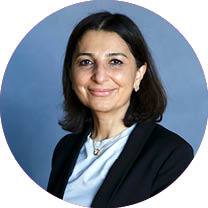Officials from the Texas Department of Transportation along with state and local officials gathered at the TxDOT south Travis County-area office to kick off construction of the two high-occupancy vehicle lanes running along the southern part of I-35. In addition to the nontolled lanes, the project will tackle safety and mobility projects within the area, including pedestrian paths, bicycle paths and reconstructed bridges.
It will add two bypass lanes at Stassney Lane and William Cannon Drive, improve east-west connections and add approximately 13 miles of new shared-use paths through the corridor.
“I-35 [through] Austin is the most congested choke point in the entire state of Texas,” Texas Transportation Commission Chair J. Bruce Bugg Jr. said.
The last improvements to add capacity to I-35 were made in 1974 when the population of Austin was 297,000 people, Bugg said. The population of Austin, Round Rock and Georgetown combined is now over 2.3 million people, and the state demographer projects the population will double by 2050, he said.
TxDOT and Capital Area Metropolitan Planning Organization, CAMPO, will fund the $548 million project. The plan came together through the Texas Clear Lanes Program, a congestion relief initiative started by Gov. Greg Abbott in 2015. The program uses taxpayer dollars to build non-tolled roads. The I-35 capital express south project is one of three such projects planned for I-35, costing a total of $7.8 billion.
“We're going to take it all the way up to the north end and go through the center of Austin,” Bugg said.
District 21 Texas Senator Judith Zaffirini was also present in the groundbreaking. I-35 is part of her district, which runs from Laredo to Austin.
“I-35 and other networks bring together our countries of the United States with our Mexican partners to the south and our Canadian partners to the north,” Zaffirini said.
The improvements in the interstate highway will add safety and mobility along this corridor, TxDOT Austin District Engineer Tucker Ferguson said.
These plans will offer a less congested and more reliable route for those who carpool, ride transit and also for emergency vehicles; reduce conflict points for potential crashes; and improve safety along the entire corridor, Ferguson said.









